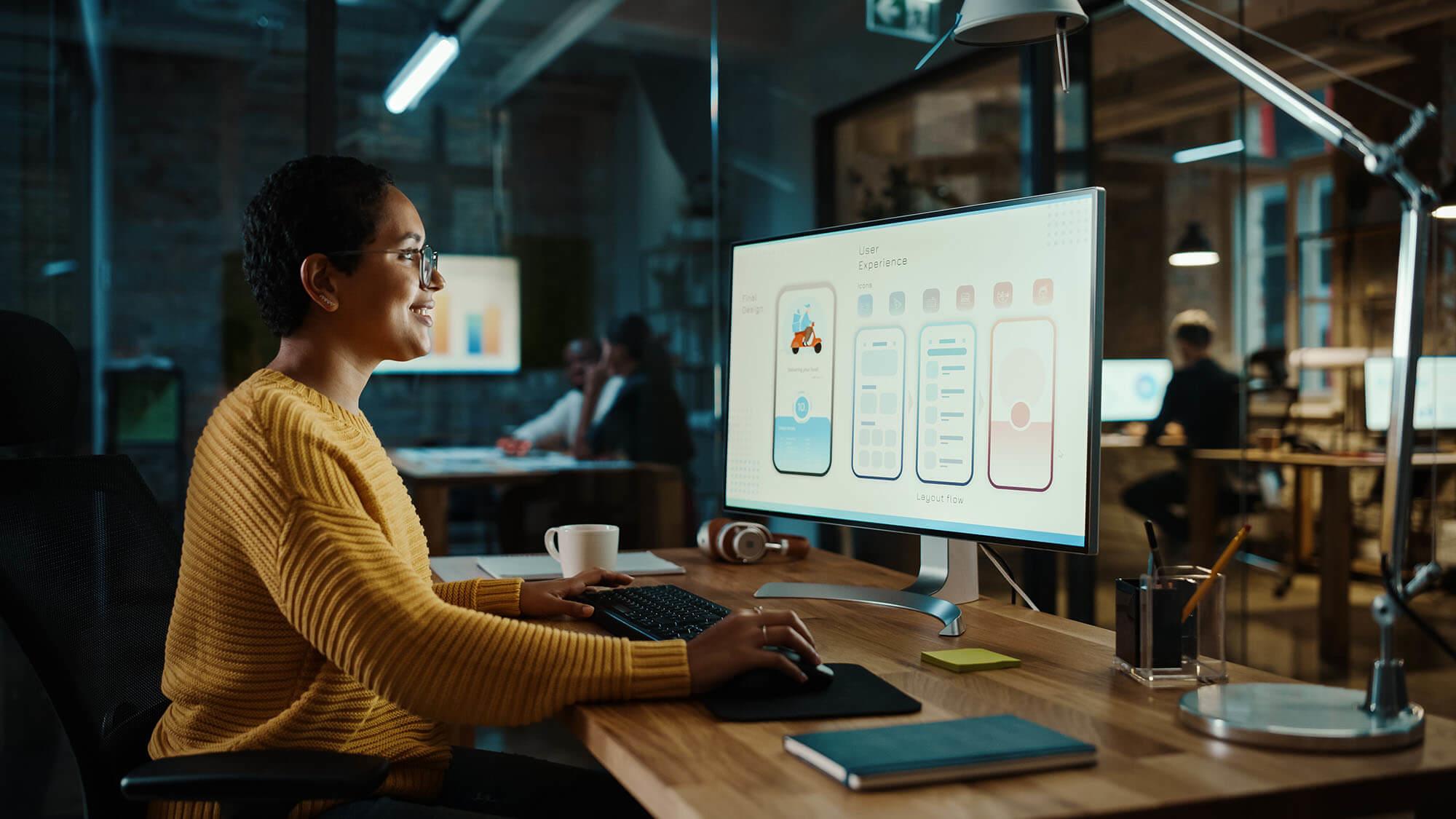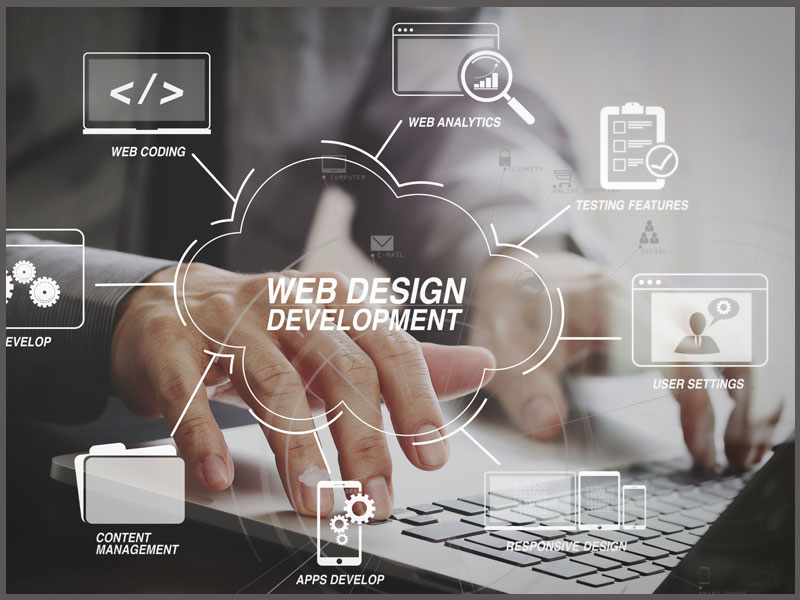Aligned Position Web Design: Creating Custom Websites That Drive Traffic and Increase Conversions
Aligned Position Web Design: Creating Custom Websites That Drive Traffic and Increase Conversions
Blog Article
The Most Effective Kinds Of Web Layout to Boost User Experience and Interaction
In the ever-evolving landscape of electronic interaction, the performance of Web design dramatically affects customer experience and interaction. Various design strategies, such as minimal, receptive, and interactive designs, each offer distinct advantages that can cater to diverse individual requirements.
Minimalist Web Style
As electronic landscapes become significantly chaotic, minimal website design has arised as an effective method to improving individual experience. This style approach prioritizes simpleness, focusing on necessary aspects while getting rid of unnecessary interruptions. By utilizing ample white room, straightforward navigating, and a limited color palette, minimalist layout fosters quality and guides individual focus to crucial content.
The core concept of minimal website design is to produce a seamless communication for individuals. By minimizing cognitive load, users can swiftly comprehend details without feeling bewildered. This straight strategy not only enhances use yet also encourages interaction, as visitors are most likely to discover a website that is aesthetically appealing and very easy to browse.
Furthermore, minimalist layout commonly stresses typography and imagery, using these aspects purposefully to share messages properly. This emphasis on crucial parts can improve brand identification and develop a memorable customer experience. In significance, minimalist website design is not simply a fad; it is a thoughtful method that acknowledges the value of user-centered design. By stripping away additional elements, designers can create a much more appealing, effective, and satisfying Web experience for all users.
Receptive Website Design
In today's varied digital environment, responsive Web design has actually become important for creating a smooth individual experience throughout a plethora of gadgets. As customers accessibility sites on mobile phones, laptops, desktops, and tablet computers, the capability of a site to adapt its design and material to various display sizes and resolutions is critical.
Receptive Web layout uses versatile grids, images, and CSS media queries to guarantee that Web content is provided ideally, no matter the tool made use of. This strategy not just boosts the visual appeal of a site but also considerably improves use. Individuals are most likely to engage with a site that uses a consistent experience, as it eliminates the stress of needing to zoom in or scroll exceedingly.
By adopting responsive layout, companies can boost their visibility and get to a more comprehensive audience. In summary, receptive Web design is an essential practice that enhances individual experience, engagement, and general satisfaction.
Interactive Website Design
Receptive Web style lays the foundation for enhancing individual experience, yet interactive website design takes this a step better by involving users in a much more vibrant way - Aligned Position Web Design. By including elements such as animations, clickable prototypes, and real-time comments, interactive website design mesmerizes customers, attracting them into a richer browsing experience
This method not just fosters interaction however additionally urges customers to explore material actively rather than passively eating it. Methods such as gamification, where customers gain incentives for completing jobs, can significantly enhance the time spent on a site and enhance general contentment. In addition, interactive read this post here attributes can streamline intricate info, making it extra absorbable and delightful.

Integrating interactive layout elements can likewise lead to higher conversion prices, as individuals are most likely to involve with a site that actively includes them. Aligned Position Web Design. Inevitably, interactive website design transforms individual experiences right into remarkable journeys, making sure that site visitors return time after time
Flat Style
Defined by its minimalistic technique, level design highlights simpleness and performance, removing unneeded aspects and concentrating on essential attributes. This layout ideology focuses on use, ensuring that users can browse user interfaces with convenience and performance. By using a tidy visual, flat style removes the mess usually located in a lot more elaborate styles, consequently boosting individual focus on content and functionality.
The hallmark of level design lies in its use of bold shades, straightforward typography, and geometric forms. These aspects add to an aesthetically attractive interface that is both modern and friendly. Furthermore, level design fosters a feeling of clearness, allowing customers to discern important activities and info without interruption.
Moreover, level design is especially reliable in responsive Web layout, as its simplicity equates well throughout various gadgets and screen dimensions. By concentrating on vital attributes, level layout not only satisfies customer demands but likewise motivates smooth interaction, making it an essential component of effective Web style approaches.
Flexible Website Design
Flexible website design customizes the individual experience by producing numerous repaired designs tailored to various display dimensions and gadgets. Unlike receptive layout, which fluidly adjusts a single layout, adaptive design employs distinct formats for specific breakpoints, making certain optimum discussion on numerous systems. This strategy enables developers to concentrate on the one-of-a-kind features of each tool, boosting use by supplying precisely what customers require based upon their context.
Among the main advantages of adaptive Web layout is its ability to optimize load times and efficiency. By offering customized material and images that fit the user's device, sites can reduce data use and boost loading speeds. This is particularly advantageous for users with slower connections or restricted data plans.

Furthermore, flexible style promotes a more constant and regulated branding experience. Considering that developers create several formats, they can ensure that the visual components line up with the brand's identity throughout various systems - Aligned Position Web Design. This results in a cohesive individual experience, enhancing interaction and advertising customer retention
Conclusion
To conclude, the assimilation of minimal, receptive, and interactive website design concepts significantly enhances user experience and interaction. Minimal layout cultivates clarity and focus, while responsive style makes sure flexibility throughout numerous gadgets, advertising ease of access. Interactive design mesmerizes individuals with dynamic aspects, encouraging exploration and personalization. Collectively, these design approaches contribute to the creation of easy to use environments that not only enhance fulfillment however likewise drive higher conversion from this source rates, underscoring their vital relevance in modern Web style techniques.

Minimal layout cultivates quality and emphasis, while receptive layout ensures adaptability across different gadgets, promoting ease of access. Collectively, these style approaches contribute to the development of straightforward environments that not only enhance fulfillment however also drive greater conversion rates, underscoring their essential significance in modern Web style techniques.
Report this page